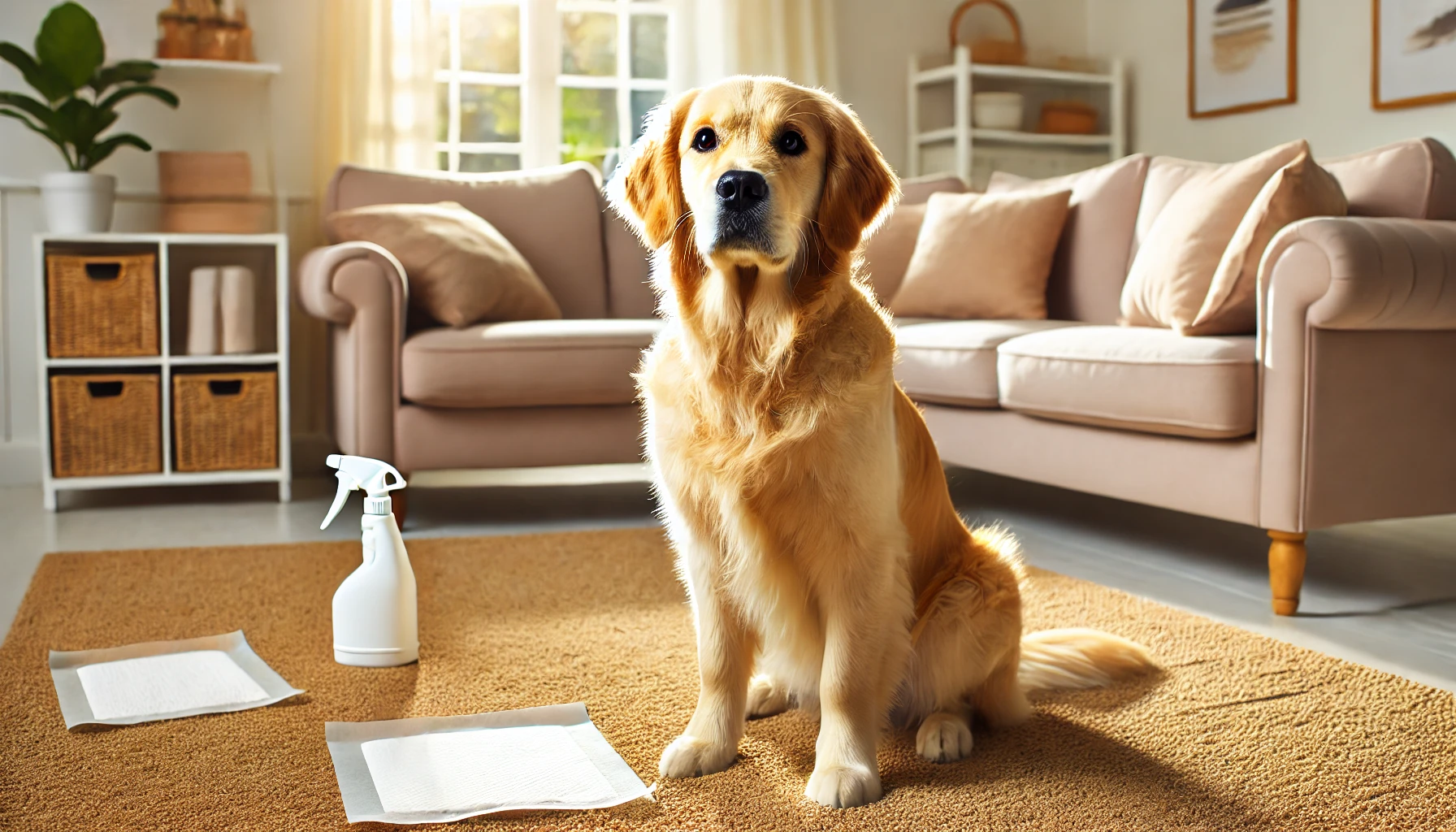Introduction
Dealing with a dog peeing on the carpet can be frustrating, but it’s a common issue that many pet owners face. Dogs may pee indoors due to anxiety, medical problems, or incomplete house training. Understanding why it happens is the first step to finding a solution. Addressing the root cause—whether it’s stress, a medical condition, or poor training—will help you stop this behavior and prevent future accidents. In this guide, we’ll walk you through practical solutions and training techniques to help your dog develop better habits and keep your carpets clean.
Common Causes of Carpet Peeing
Dogs pee on carpets for various reasons. Medical issues like urinary tract infections (UTIs) or bladder problems can make it hard for them to hold it in. Anxiety and stress, caused by environmental changes or separation, can also lead to accidents. Incomplete house training is another common cause, especially for younger dogs. Some dogs mark their territory by peeing indoors, particularly when they sense other animals. Lack of a regular potty schedule can confuse your dog and lead to accidents. Identifying the cause is key to choosing the right solution.
Immediate Steps to Take
If your dog pees on the carpet, act quickly. First, blot the area with a paper towel to soak up as much urine as possible—avoid rubbing, as it can push the stain deeper into the carpet. Next, clean the spot with an enzymatic cleaner to break down the scent and prevent re-marking. Use a mix of vinegar and water if you don’t have a cleaner. Keep your dog away from the spot until it’s completely dry. Removing the smell is crucial to stop your dog from returning to the same spot.
Effective Training Techniques
Training is key to stopping your dog from peeing on the carpet. Start by setting a consistent potty schedule—take your dog outside at the same times each day, especially after meals and naps. Use positive reinforcement like treats and praise when they go outside. Crate training can help, as dogs avoid peeing where they sleep. If you catch your dog in the act, interrupt them gently and lead them outside. Stay patient and consistent—training takes time, but positive habits will develop with regular practice.
Preventative Measures
Preventing accidents starts with setting up the right environment. Use pee pads or artificial grass in designated spots to give your dog a clear place to go. Block access to frequently marked areas using baby gates or furniture. Clean any previous accidents with an enzymatic cleaner to remove lingering scents that might trigger re-marking. Establish a consistent potty routine and take your dog outside regularly. Provide plenty of bathroom breaks, especially after eating or drinking. Keeping a clean and structured environment helps prevent future accidents and reinforces positive habits.
Natural and Commercial Deterrents
To stop your dog from peeing on the carpet, try using natural deterrents like citrus scents or vinegar—dogs dislike these smells. Spray a mixture of lemon juice and water on problem areas. Commercial anti-urine sprays can also help discourage marking by neutralizing odors. Place double-sided tape or aluminum foil on the carpet to make it uncomfortable for your dog to step on. Make sure the deterrents you use are pet-safe and non-toxic. Consistency is key—using deterrents regularly reinforces that the carpet is off-limits for peeing.
When to Seek Professional Help
If your dog keeps peeing on the carpet despite consistent training, it may be time to consult a vet or trainer. Medical issues like urinary tract infections or bladder problems can cause accidents, so a vet check-up is essential. If your dog seems anxious or stressed, a professional trainer can help with behavior modification. Persistent marking or sudden changes in bathroom habits could signal a deeper issue. Don’t wait too long—early intervention increases the chances of resolving the problem quickly and effectively.
FAQs
Why does my dog pee indoors after being potty trained?
This could be due to medical issues, anxiety, or a change in routine.
How long does it take to retrain a dog?
It varies by dog, but consistency and positive reinforcement usually show results within a few weeks.
Are certain breeds more prone to accidents?
Yes, smaller breeds and puppies are more likely to have accidents due to smaller bladders.
Can I use pee pads long-term?
Yes, but it may confuse your dog about where it’s acceptable to go.
Should I punish my dog for accidents?
No—use positive reinforcement instead.
Conclusion
Stopping your dog from peeing on the carpet takes patience and consistency. Start by understanding the cause—whether it’s medical, behavioral, or environmental. Use positive reinforcement and establish a regular potty routine. Clean accidents thoroughly with an enzymatic cleaner to remove lingering scents. Natural and commercial deterrents can help reinforce good habits. If the problem persists, don’t hesitate to seek professional help from a vet or trainer. With time and the right approach, you can successfully train your dog and keep your carpets clean.
